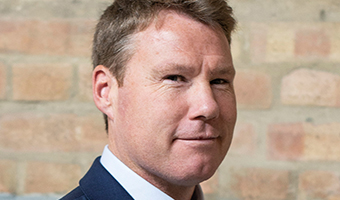The figure remains well above the five-year average of £281 million, although it is down 17% on the same quarter last year.
Meanwhile, the Midlands Engine region continued to surge ahead with investment in Q2 hitting £1.3 billion – up 23% on the same period last year. The figure was a very healthy 41% above the five-year average.
Adam Ramshaw, head of LSH East Midlands and Birmingham, said the levels of activity in Q2 across the East Midlands market showed the most positive performance in the UK.
“The East Midlands had a very strong Q2 compared to all other regions and it remains up on the five-yearly quarter average, too.
“As the political landscape changes and the government starts to negotiate Brexit, we expect investors to continue their interest in the East Midlands commercial property sector. The region is very well placed to benefit from investment and it is important to emphasise that it is still business as usual in the East Midlands.”
Nationally, UK commercial property prices will fall by a double-digit percentage over the next six months, the UKIT report reveals. It predicts that market uncertainty generated by the UK’s decision to leave the EU will lead to an 11% fall in capital values by the end of 2016.
However, the impact on prices will vary. Values will hold up well for prime and secure long-income stock, reflecting the ongoing weight of global capital and a flight to quality seen in the wake of the vote.
The authors find that pricing started to fall in advance of the EU referendum, with average transaction yields rising by 15 basis points between April and June – the first time this has happened for two years.
The report also reveals that investment activity remained subdued in the run-up to the referendum, with transaction volumes totalling £9.8 billion during the second quarter of 2016 - down 18% on the previous quarter, 45% below the same period last year, and 20% short of the five-year average. The main drag on overall activity was the alternatives sectors (which includes healthcare, student housing and the private rented sector), where volume of £1.2 billion was 74% lower than in the same period in 2015.
Having been highly acquisitive over the past two years, UK institutional investors were net sellers of UK property in the second quarter of the year, divesting £1.0 billion of commercial property assets. However, overseas buyers and quoted companies remained net buyers of UK property during the quarter.
Ezra Nahome, CEO of Lambert Smith Hampton, said: “We’re getting greater clarity about the outlook for UK commercial property with every passing week, and starting to see investors revert back to more rational behavior after a brief period of heightened uncertainty. It’s a stretch to say that the market is returning to normal, but cooler heads have begun to return.
“The fall in values that we forecast for the remainder of the year is magnified by our position in the investment cycle. Values have been stretched across a number of sectors for a while, especially in Central London, so the referendum result has arguably accelerated the return to fundamentals that would have happened anyway.
“This fall in values, coupled with the devaluation of Sterling and the swift appointment of a new Prime Minister, makes UK commercial property an attractive proposition for overseas investors, and we expect them to be active buyers during the second half of the year. British-based institutional investors are likely to continue to be net sellers for the remainder of 2016.
“There will be winners and losers from this. Values for well-located properties with long leases will hold up well, perhaps even increasing if monetary policy is loosened further. Secondary assets in the more exposed sectors are likely to see the largest price adjustments, exacerbated by increased caution among lenders. The regions may also outperform London over the short to medium term both in terms of investment and development until we have a better understanding of the capital’s future outside of the EU.
“Beyond 2016, much will depend on what the details of a Brexit ultimately looks like. UK property is fundamentally in a much stronger position than it was in 2008 and there is much to be confident about in the long term. Investors who can look beyond the immediate uncertainty will be well placed to benefit from what remains an attractive asset class.”
Get in touch

Email me direct
To:
REGISTER FOR UPDATES
Get the latest insight, event invites and commercial properties by email



